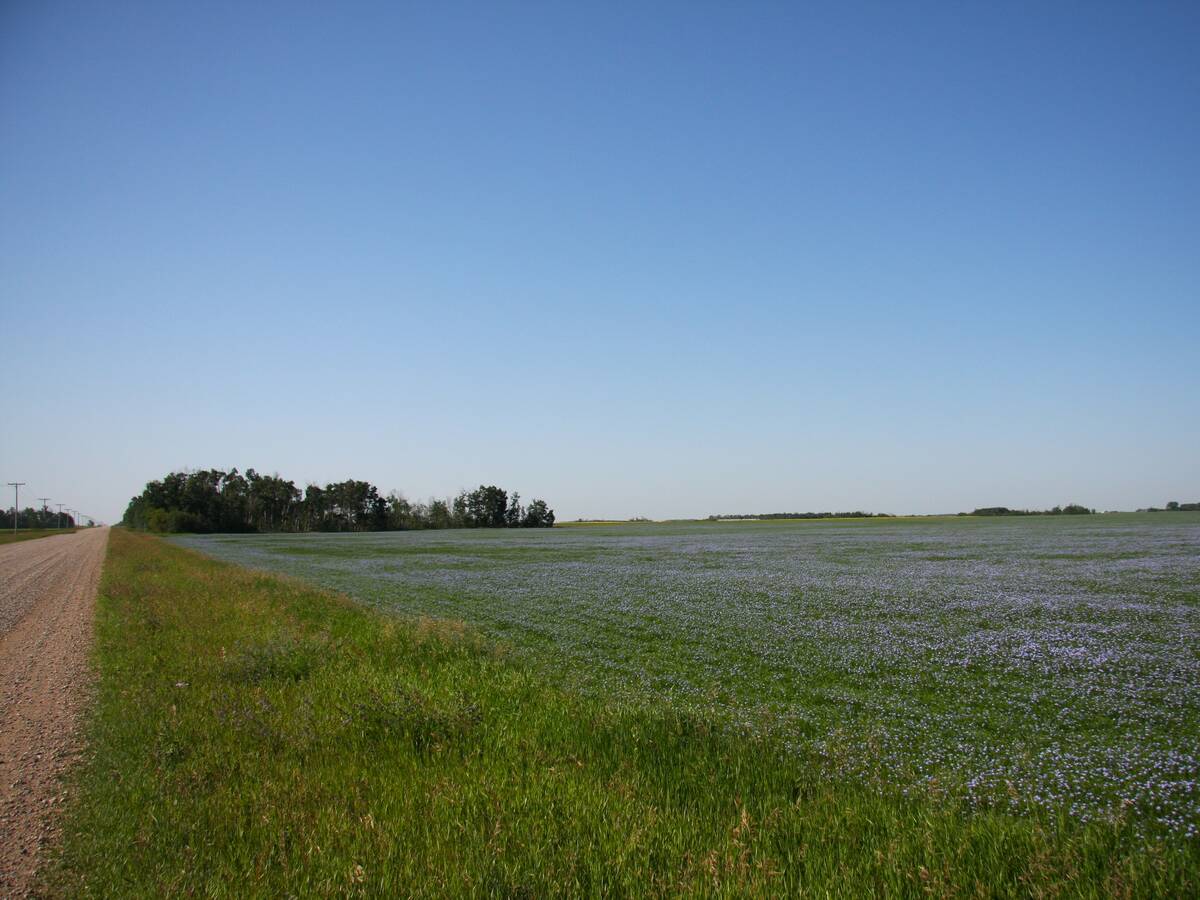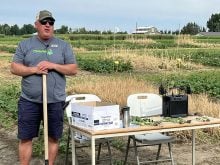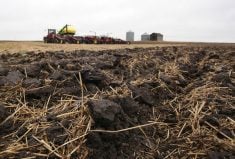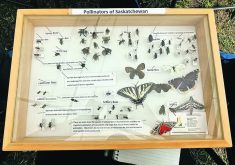BRANDON — Seeding a cover crop is one of the cornerstone practices of regenerative agriculture. The basic idea is to keep the soil covered and have a living plant in the ground for as long as possible to enhance the health and long-term productivity of the soil.
But at a regenerative agriculture conference held mid-November in Brandon, several speakers questioned the value of cover crops in Western Canada.
They may work in southern Ontario or in the U.S. Midwest, but not in the cold and dry climate of Western Canada.
Read Also

Farmland advisory committee created in Saskatchewan
The Saskatchewan government has created the Farm Land Ownership Advisory Committee to address farmer concerns and gain feedback about the issues.
“I believe that cover crops are extremely important. Zero till is extremely important,” said David Rourke, a farmer from Minto, Man., and a panelist at the Manitoba Forage and Grassland Association Regen Ag Conference.
“(But) right now, our cover crop promotion is to try to get farmers … to seed (cover crops) during harvest and take 40 or 50 bucks (per acre) out of your pocket and hope you get a return.”
In February, Agriculture Canada announced $182.7 million in funding to 12 organizations across the country to encourage farmers to plant cover crops, try rotational grazing of livestock and change their management of nitrogen fertilizer.
If enough farmers adopt such practices, Canada’s agricultural sector could reduce its greenhouse gas emissions and become more sustainable.
“Activities supported through the (funding) are expected to reduce emissions by up to two million tonnes by 2024,” Agriculture Canada said in release.
But many western Canadian farmers have pushed back against the federal incentives, saying the government is imposing an Ontario solution on the Prairies.
Rourke, who operated an organic farm for five years before switching back to conventional production, said seeding a cover crop in the autumn isn’t worth the cost, which includes the expense of seed and the time and labour needed for seeding.
With sufficient moisture and a perfect fall, a producer might get the necessary growth from a cover crop and the related benefits to the soil before freeze-up. But the Prairies are not southern Illinois, where 15 C to 20 C days are normal from late September to early November.
Ryan Boyd, who operates a mixed farm near Forrest, Man., said Rourke “hit the nail on the head.”
“It works, given the right circumstances. (But) we live here in a northern climate and our biggest challenge is the short (growing) season…. Expecting the farmer to seed a cover crop while they’re harvesting… we have such a narrow window (at harvest time). That’s not an excuse. It’s reality,” said Boyd, an advocate of regenerative practices and a Nuffield scholar.
“If we’re defining it as a crop that’s seeded post-harvest, in the fall, expecting significant growth and it’s going to have significant impact … from my personal experience, I don’t think it’s the right (approach).”
Rourke and others at the conference discussed introducing or reintroducing cattle to grain farms in Western Canada, which would encourage the planting of perennial crops and intensive livestock grazing. Both practices improve soil health.
However, there’s one problem with that concept.
“I think there’s a mindset — grain farmers don’t want anything to do with cows,” said Mike Duguid, a rancher from Arnes, Man.
“My son and I were talking on the way here. Put 500 steers on a quarter (section) of land for a while to get something happening in (the soil, but) the logistics to get them back is another problem. They’re not a load of grain. They’re animals that you have to chase. Someone has to babysit them…. There are always issues.”
Rourke agreed.
Livestock can make farmland more productive and sustainable, but it’s unlikely to happen on the 70 million acres of grain land in Western Canada.
“We’re not going to sow perennials. We’re not going to put up fences, and they (grain producers) are not going to buy cows.”
Which leads back to the question: how to improve soil organic carbon and the soil health of cropland in Western Canada if fall-seeded cover crops and livestock aren’t an option?
“I don’t think for grainland … there is an easy button,” Rourke said.
However, Lori-Ann Kaminski, research manager with the Manitoba Crop Alliance, said a diverse crop rotation could be part of the solution.
“When we look across Canada how crop rotations are quite narrow … we have a lot of opportunity (in Manitoba) to mix it up,” she said.
“We have things like sunflowers, with those huge, deep roots that can really open up soil…. We want to come to that spot where that (diverse) rotation is giving us a healthy soil, the healthiest we can get to.”
Growing a variety of crops is always useful, assuming it makes financial sense for a farm.
However, Rourke believes the agriculture industry needs a bolder idea to improve sustainability and cut greenhouse gas emissions — maybe a cover crop that is seeded in the spring and germinates in late summer.
“We need to take some of that money that is available and invest it in something like a delayed germination seed technology…. We could do one-pass cash crop and cover crop seeding,” he said.
“(Maybe) we could invest in those technologies, either with coatings or genetics. It’s going to take deep pockets, but that’s the kind of thing we need to do. Make it closer to an easy button (for producers).”
Boyd acknowledged that there are no simple answers to store more carbon in the soil, make farmland more sustainable and preserve the profitability of crop production in Western Canada.
“It would be nice if it would be as easy as the ‘YouTube University.’ ”






![A top-down approach [to regenerative agriculture] can work, maybe, but it does have limitations. Some food and agriculture companies have realized that this movement should be handed back to farmers, says University of Washington geologist David Montgomery. | File photo](https://static.producer.com/wp-content/uploads/2024/10/22141434/03-RKA121018_david_montgomery2-235x165.jpg)









